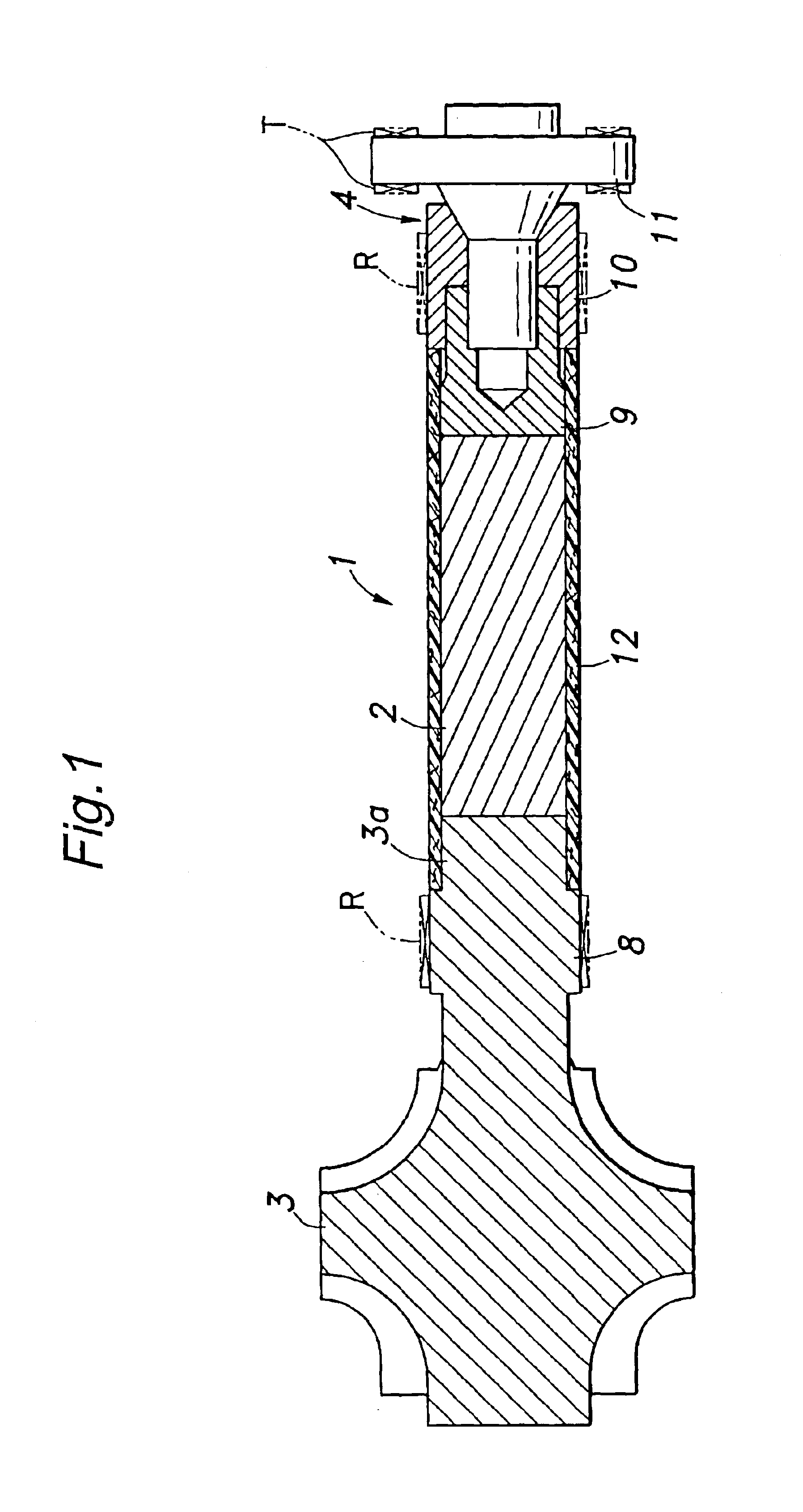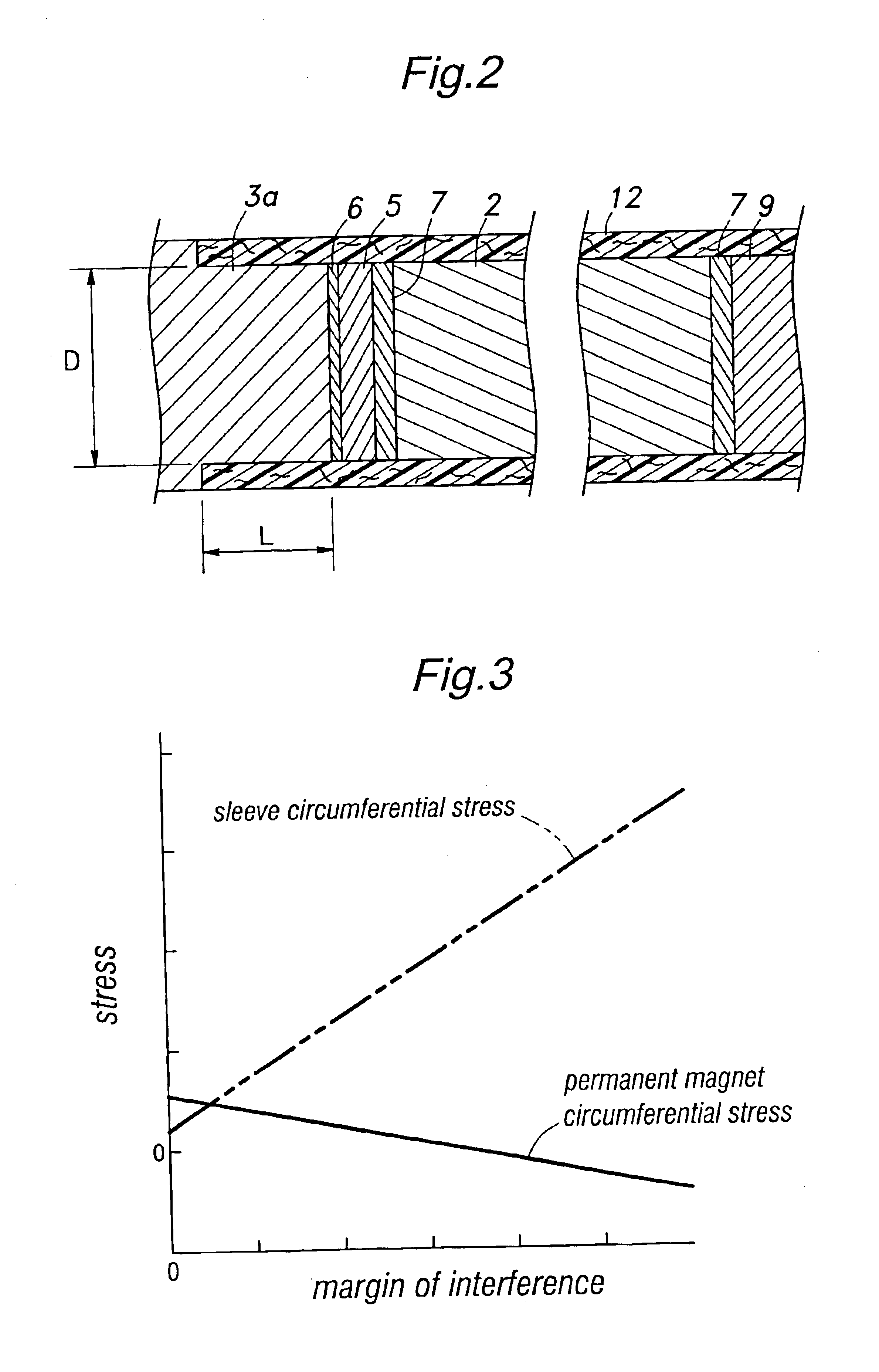Permanent magnet rotor
a permanent magnet and rotor technology, applied in the direction of magnetic circuit rotating parts, magnetic circuit shape/form/construction, liquid fuel engines, etc., can solve the problems of increasing internal loss, increasing axial dimension, and inability to reduce axial dimension, so as to increase the overall rigidity, avoid the reduction of the cross sectional area of the permanent magnet, increase the axial dimension of the rotor
- Summary
- Abstract
- Description
- Claims
- Application Information
AI Technical Summary
Benefits of technology
Problems solved by technology
Method used
Image
Examples
Embodiment Construction
FIG. 1 shows a permanent magnet rotor having a turbine integrally formed therewith. This rotor 1 consists of a rotor for an electric generator driven by a small power plant consisting of a gas turbine engine, and comprises a cylindrical permanent magnet 2 and a shaft 3a of a turbine 3, the shaft 3a serving as a power transmitting member directly connected to an axial end surface of the permanent magnet 2. In this embodiment, the permanent magnet 2 consists of neodymium iron boron permanent magnet material (Nd15; Fe77; B8), but other permanent magnet materials such as samarium cobalt permanent magnet material may also be used to implement the present invention without substantially modifying the arrangements associated with the bonding of various parts by brazing.
A bearing support assembly 4 is connected to the other axial end surface of the permanent magnet 2. This provides a highly compact structure. The turbine 3 may be made of ceramic material such as silicon nitride and silicon ...
PUM
 Login to View More
Login to View More Abstract
Description
Claims
Application Information
 Login to View More
Login to View More - R&D
- Intellectual Property
- Life Sciences
- Materials
- Tech Scout
- Unparalleled Data Quality
- Higher Quality Content
- 60% Fewer Hallucinations
Browse by: Latest US Patents, China's latest patents, Technical Efficacy Thesaurus, Application Domain, Technology Topic, Popular Technical Reports.
© 2025 PatSnap. All rights reserved.Legal|Privacy policy|Modern Slavery Act Transparency Statement|Sitemap|About US| Contact US: help@patsnap.com



